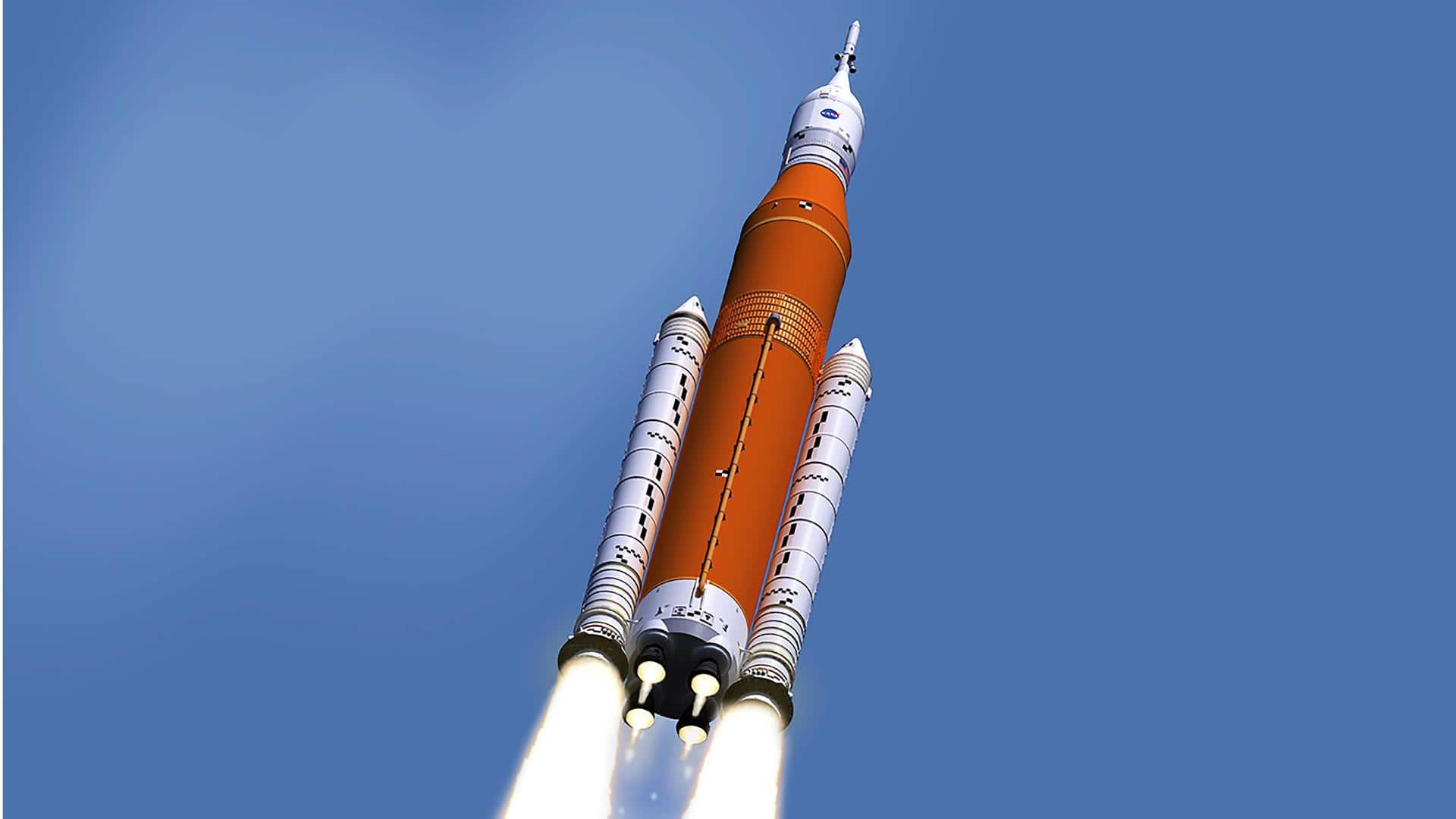
Key facts about world's most powerful rocket, built by NASA
What's the story
NASA's Space Launch System (SLS) is the most powerful rocket ever built. During its maiden launch of Artemis 1, it generated 8.8 million pounds of thrust. It is 15% more powerful than the iconic Saturn V rocket that sent Apollo missions to Moon. Its thrust is equivalent to nearly all the train engines in the US running at once-about 25,000, according to NASA.
Context
Why does this story matter?
NASA's Artemis 1 mission was a successful uncrewed test flight of the SLS rocket and the Orion spacecraft. Preparations are currently underway for Artemis 2, which will be a crewed mission around the Moon. Investigations conducted after Artemis 1 revealed that the SLS rocket exceeded expectations during its debut launch and that its "designs are ready to support a crewed flight on Artemis 2."
Design
The SLS rocket is taller than the Statue of Liberty
Standing at 322 feet, SLS is taller than the Statue of Liberty. The rocket is designed to be evolvable, allowing it to fly more missions, including human missions to the Moon and Mars, and robotic scientific missions to destinations including the Moon, Mars, Saturn, and Jupiter. Saturn V, the rocket that NASA used to take people into deep space, was 41-feet taller than SLS.
Capabilities
SLS configuration uses the core stage with four RS-25 engines
Every SLS configuration uses the core stage with four RS-25 engines. The first SLS vehicle—called Block 1—can launch nearly 27,000kg to orbits beyond the moon. It is powered by a pair of five-segment solid rocket boosters and liquid propellant engines. The rocket booster called Interim Cryogenic Propulsion Stage (ICPS) flew on the Artemis 1 mission, taking Orion around the Moon.
Information
The core stage serves as the "backbone of the rocket"
The core stage serves as the "backbone of the rocket," according to NASA. It supports the weight of the payload, upper stage, crew vehicle, and the thrust of its four RS-25 engines and "two five-segment solid rocket boosters attached to the engine and intertank sections."
Artemis
Missions that will carry astronauts will have different rocket configuration
Missions that will carry astronauts will have a different rocket configurations, including the Exploration Upper Stage. Termed "Block 1B," it can transport crew and cargo up to 38,000kg. Block 2 configuration will provide 9.5 million pounds of thrust and will be the "workhorse vehicle for sending cargo to the Moon, Mars, and other deep space destinations." It can lift 46,000kg into deep space.
Artemis 2
Artemis 2 is expected to launch in November 2024
Talking about the latest developments on Artemis 2, the teams have integrated all five major structures of the SLS rocket's core. Next, the engineers will insert the four RS-25 engines to complete the stage. Artemis 2, which is the first crewed Artemis mission, will send four astronauts around the Moon and bring them back. It is expected to launch in November 2024.